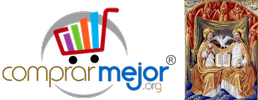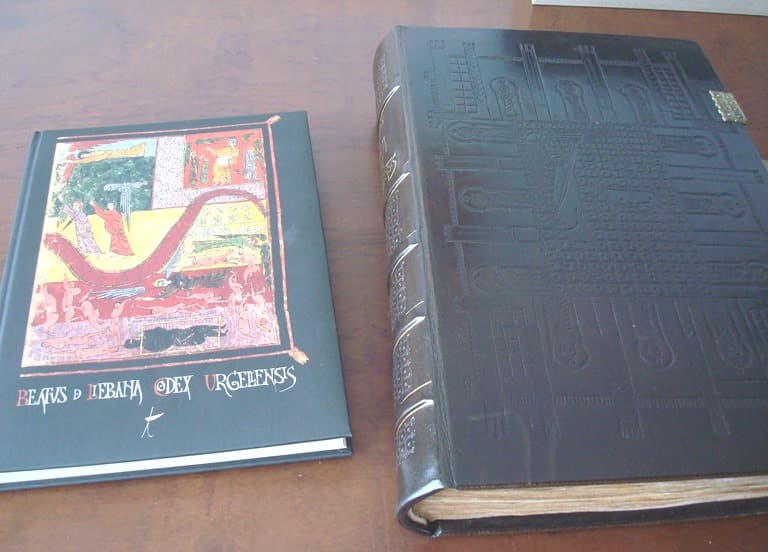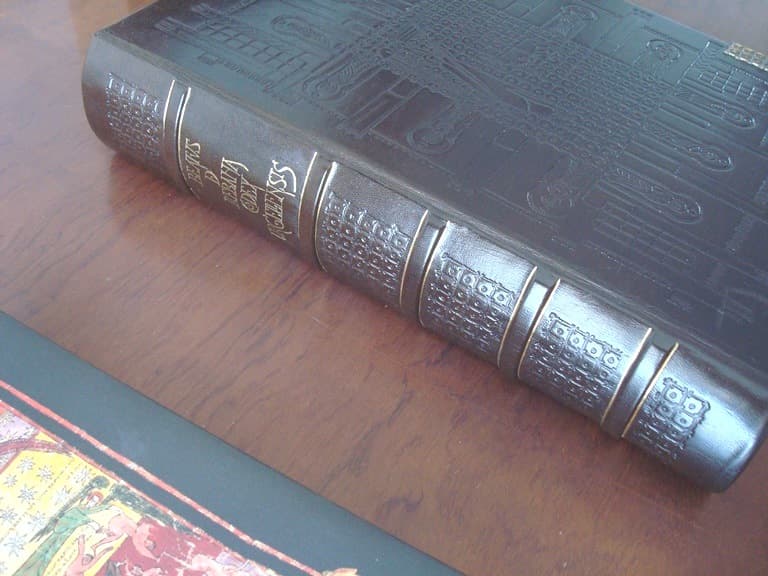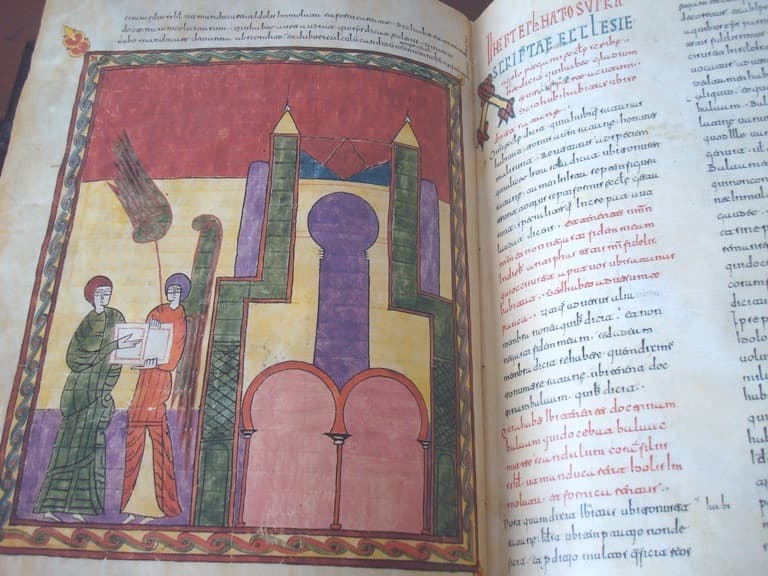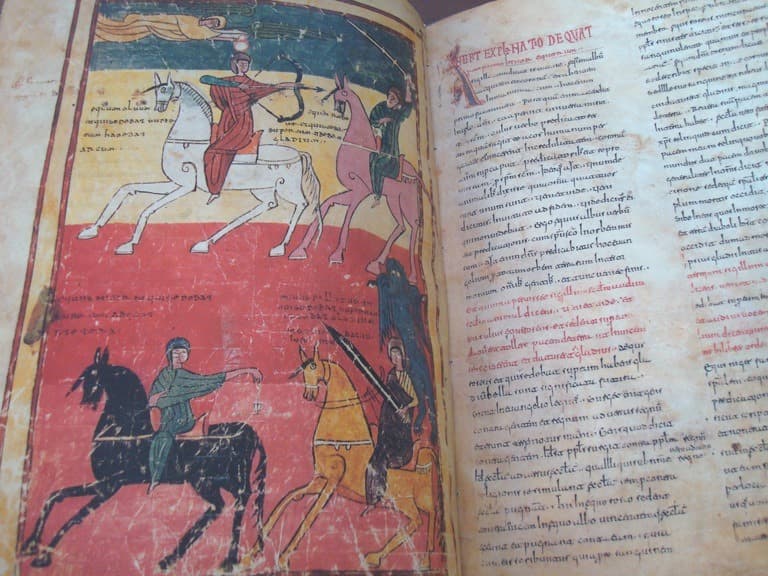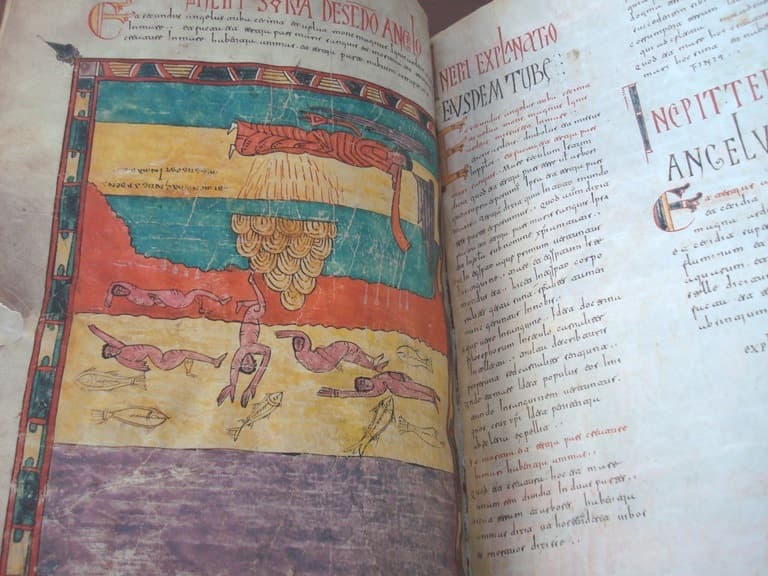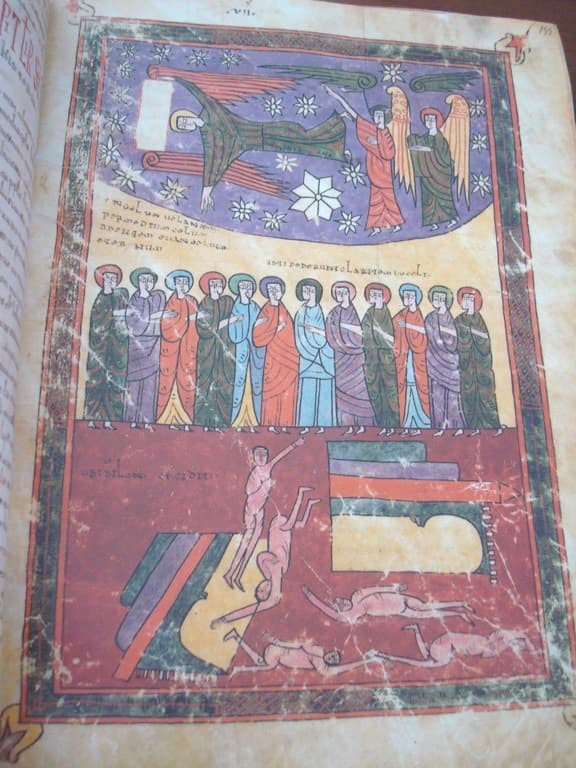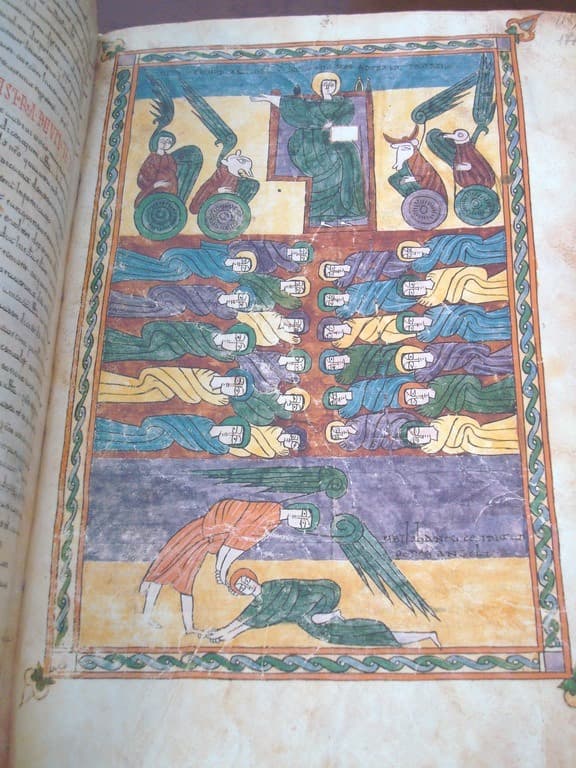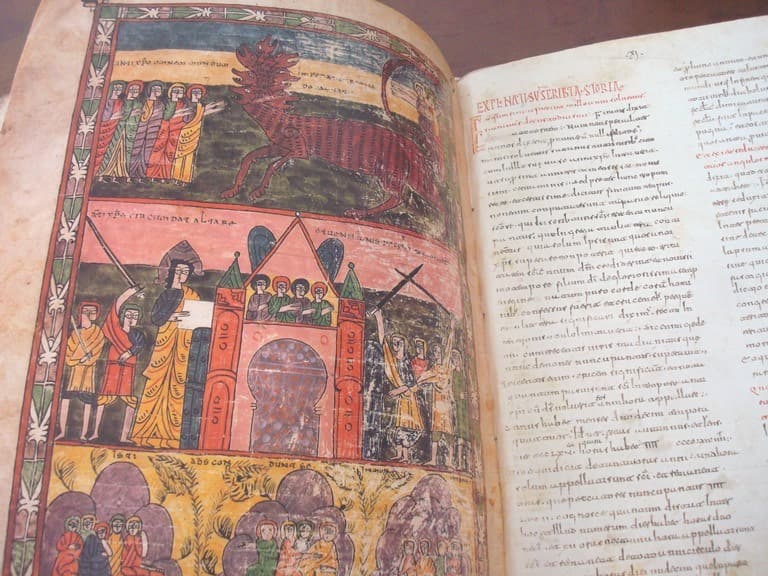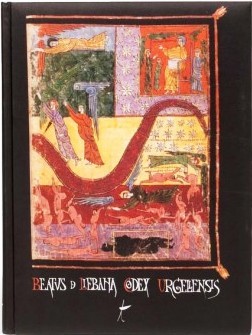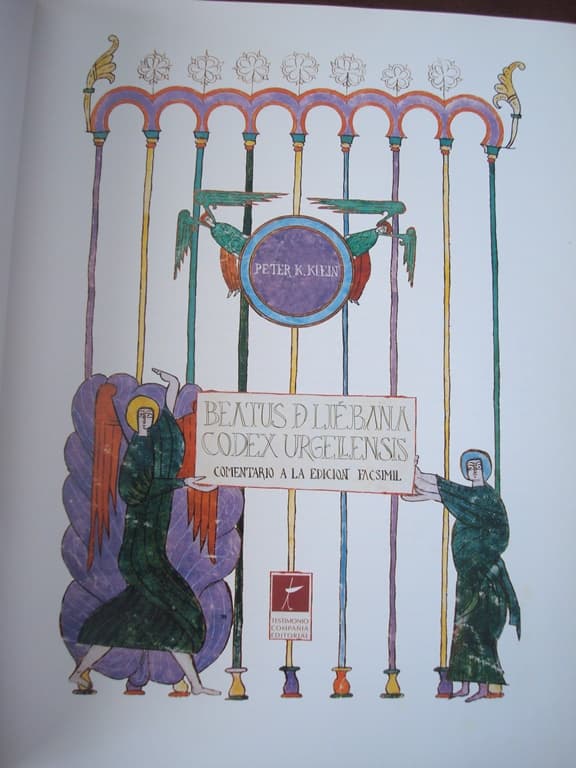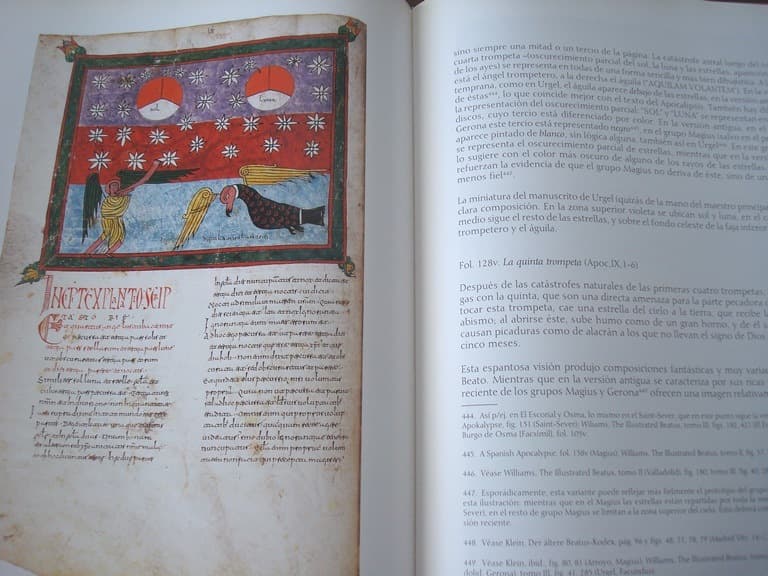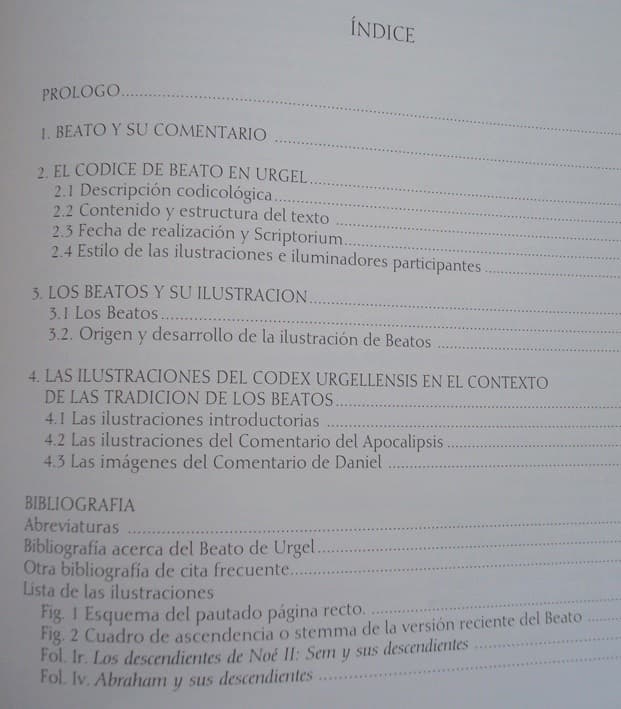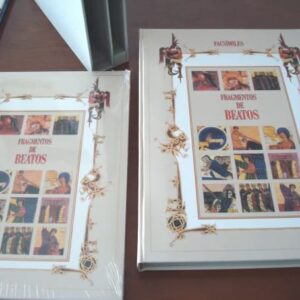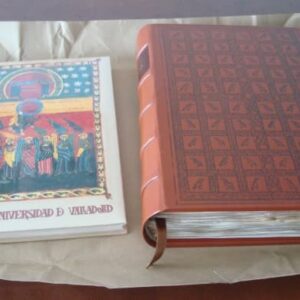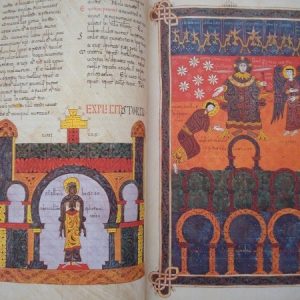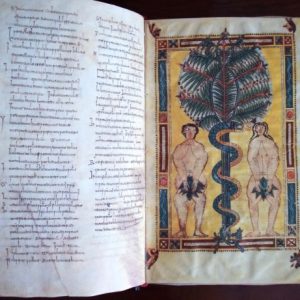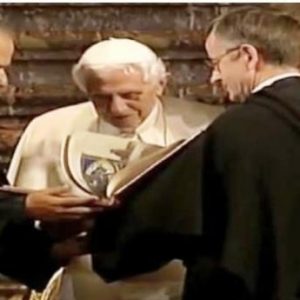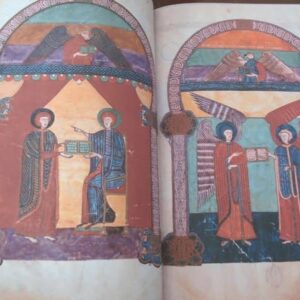Description
The codex is made today (along more than a thousand years you have been plucked some leaves) 239 sheets seven numbered in Roman and Arabic 232, measuring 398 x 270 mm. The script used is called Visigoth round, and is divided into two columns. Although the book lacks climax and therefore do not know the exact year in which it was written, we must place it shortly after 970, date of preparation of Valcavado, chronology that support also writing and miniatures.
Blessed de Urgel consists of 79 miniatures, some occupying two pages, not counting those in the medallions of family trees that are at the beginning of the work. The painting technique is fully inserted into the Leon mozárabe miniaturística: strong, crisp and bright colors, which are a challenge for facsimile reproduction; Simplified drawing, reduced to essentials; the staging of people and objects, and in order to get some perspective, occurs on overlapping longitudinal bands of different colors.
Hispanic codices of the time altomedieval greatly highlight called Blessed, and not for its text, a commentary on the Apocalypse of St. John, but because they were illuminated with beautiful miniatures, designed as a modern comic book, to capture by drawing and color certain passages of Revelation.
These works take the name of blessed because its author was called Beato (male name Beatrice) and was a monk who lived in the valley of Liebana in Cantabria, in the Monastery of San Martin, horseback 800. Modern critics He considers that Beato took as a basis the North African author Tyconius, which were added texts of the Fathers of the Church and of San Isidoro. The work is divided into twelve books, each divided, in turn, into a Storia and a Explanatio. At a later time, the blessed were completed, among others, texts of the Etymologies of San Isidoro and San Jeronimo explanation of the book of Daniel.
The commentary on the Apocalypse by Beato met an extraordinary development in lands of Castile and Leon during the tenth century, perhaps encouraged by the terror he felt Christianity to the approaching end of the world in 1000 and how well represented images and text of the blessed. Best codices, in fact, and its creators (Magio, Emeterio, Senior, Oveco, etc.) are of Zamora, León and Palencia. We note in particular the so-called Morgan, today in New York, and the Valcavado in Valladolid, not because they are among the half-dozen best blessed, but because they are of the same family as the exemplar of Seo Urgel. The similarity of the Urgellensis with Valcavado are so many that might venture that both were prepared in the same scriptorium.
How did such a magnificent example of the Church of Urgel? For an inventory of the Library of Seo de Urgel, we know that was in Pyrenean lands in 1147. It is well known the very strong involvement of the Counts of Urgel with King Alfonso VI and his descendants. Armengol V (1092-1102) married Mary, daughter of Count Pedro Ansúrez, founder of Valladolid. This Castilian Count Urgel County ruled in the early twelfth century during the minority of his grandson, Armengol VI. It is quite likely that the count Pedro Ansúrez Armengol V or donate the book to Bishop St. Odo, patron of the city, and initiator of the construction of the present cathedral.
Exemplary corresponding to the extraordinary facsimile edition of the publishing Testimony held in 1997. Format 41.5 x 29.5 cm. Bound in brown goat skin dry stamping and bronze fittings. 226 pages book study, led by Peter K. Klein, a professor at the University of Marburg (Germany).
This facsimile of Beatus of Seu d’Urgell received the Award for the Best Books published in 1997 by the Association of Graphic Arts in Madrid, and Facsimile Bibliofilia category.
NOTE: There is a study book for this edition in Spanish, English and German. If you do not tell us otherwise, we will deliver it in Spanish.
Free shipping for this item. Ask us any questions, indicating the article reference.


